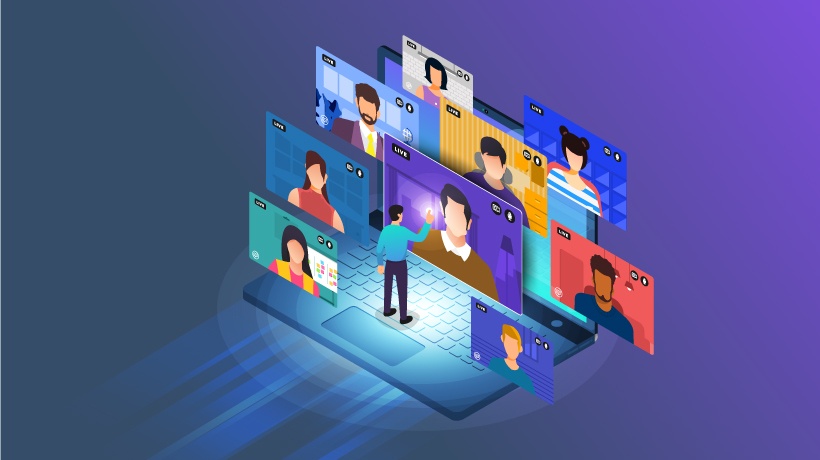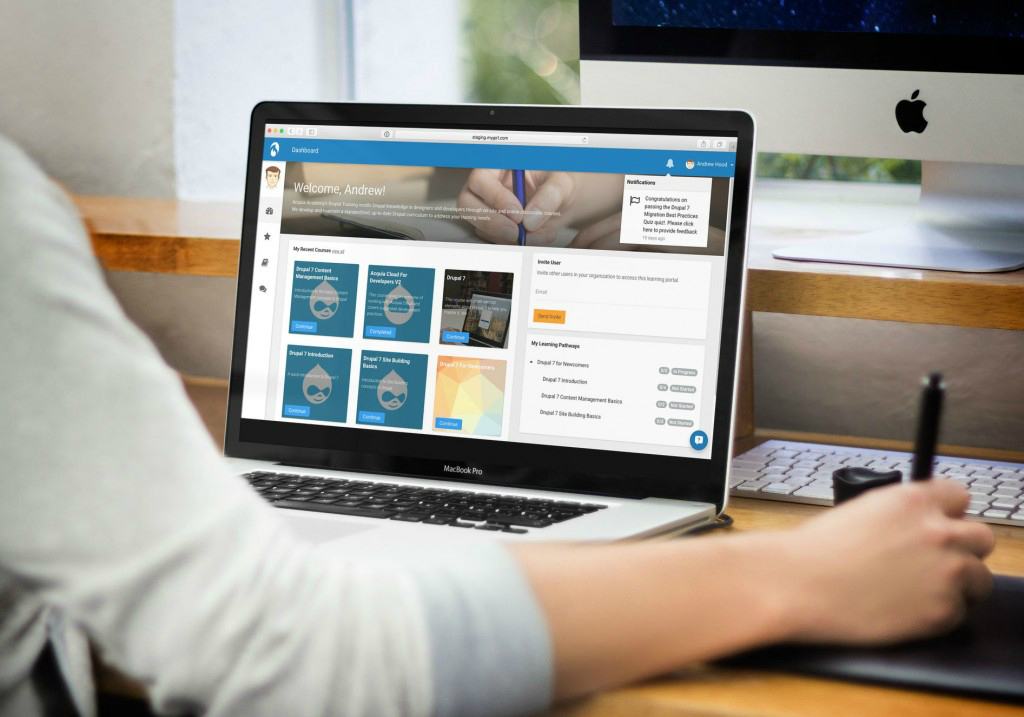How To Make Your Learning Interactive
Engaging your learners is often quoted as the key to ensuring that learning is effective. The most effective pieces of content are those that engage the learner through interactive experiences. Online learning with proper interactivity provides no other option to the learner but to be engaged. But some developers insist on not redrawing the wheel and keep churning out endless clickable squares and circles in the name of adding interactivity.
The Science Behind Interactivity
The technical definition of interactivity is the ability of a computer to respond to a user's input. Most practices use this outdated definition of interactivity and end up creating content with lots of clicks to prepare their interactions. It is time that we name such interactivities as "manual interactions" that lend nothing to the process of learning but produce boredom at best.
The true meaning of interactivity is that it is a medium that leads to a dialogue between the learner and their content. One needs to understand that in a self-paced environment the learner will access the content most probably in isolation and at complete peace with their surroundings. They have opened up the course only because they wished to learn something—a new topic or to enhance their skills. Hence, it is important to use interactivity that has a thought-process behind its inception. An interaction instead of being simply manual clicks on a screen can be a lot more.
I have found over the years various ways to properly utilize the full-attention of a peaceful learner to build interactions in the content. For example, one should begin their training by asking thought-provoking questions or present some unknown facts rather than show how many questions have been attempted correctly. The surprise element engages the brain and keeps it awake, making it conducive for further learning.
A Small Digression
A deviation from the content only helps build engagement of the learner and motivates them to learn further. I recently accessed a live example of this while searching for some information on COVID-19. It was an educational website which I cannot mention here for obvious reasons. It allowed an interaction in the form of an exercise format.
This exercise was designed to understand the anxiety level of a user while it sifts through a plethora of generic questions starting from your educational background, country of origin, living standards, etc. Now this is the most basic interaction there is to date and there is nothing anyone can expect from it. I thought that they are simply gathering data before showing me what I need.
But then it surprised me and provided educational content in line with the lifestyle of the user. This made not only the content being presented very informative but it also aligned me as a user to the pros and cons of how to behave in the COVID world. It did not bombard the user with data but only provided enough data not to overwhelm me while keeping me thoroughly engaged.
Of course, the data I provided to them about my life would be further used to power the AI behind it and improve the subject further. But not everyone has the luxury of ordering an AI system to power their content all the time. In the real world, we have to live within budgets and timeframes. But there are still ways to introduce interactivity into your content and boost the learning experience exponentially.
4 Tips To Make Learning Interactive
There is no magic charm that will give you the right answer as to which interactivity will suit your particular learning best. But here are a few tips that shall surely help make your learning interactive. Some of them may be combined with the others in the same content structure or be used in isolation as per your choice and needs.
1. Interactive Infographics
It's one of my favorite styles of interactivities. They are easy to create and present a whole lot of data in a small space. It not only allows one to communicate a variety of information to the learner but can also be used to show a different perspective of the information/data.
2. Content Simulations
Content should always be simulated in the manner of the system normally behaving in real life. This type of interactivity should only be used as a "safe environment" where the user can test out the reactions to their inputs. It should mimic the real scenario by keeping the technical framework dynamics untouched. This will also allow adding as many dimensions and possibilities as required and the learner will stay focused as they find where their decisions shall lead them.
We all have successfully used it in the past to train people regarding different life-threatening situations or to bring the mysteries of the universe closer. One needs to remember that all the options provided should be plausible for the situation and not be simple giveaways. The user choice then shall show the impacts of each decision while educating them on the correct way ahead. You may further refer to a television series called “What will you do?” on the National Geographic Channel to get inspiration for this style of interactivity.
3. AR/VR
Augmented and Virtual Reality are two methods to provide the much-needed panache to your content. It helps build the interest of the user while allowing room for showing a lot more than simple content to bring back the interest of the learner. One shall have to factor in the cost of equipment and a longer development cycle before you start taking this road.
4. Assessments
Do not quote me on this if you plan to use the same style of boring assessment with multiple choices in the name of interactivity, please. An assessment should not become a chore for the user and should admit into its domain only thought-provoking questions on the subject. Also, an assessment that does not show results is cheating the user of a wonderful experience.
And this part too can be made interesting with the use of infographics to show results, maybe in the form of a poll or a survey format. This will engage the learner as their sense of competition kicks in and they gauge themselves against their peers. Two of the seven deadly sins can also be used for good—envy and pride.
Some would recommend using gamification to provide interactivity, but a "true" gaming experience is usually out of the question for most projects. Undoubtedly, gamification is a successful way of building interactions and has a good track record to prove itself worthy. But it is advisable to use gamification only when the learner is still at an early stage of learning. Interactivities, however, can be produced easily if only one thinks them through to make learning interesting. One should carefully see where the learner is positioned in the learning journey and use suitable interventions accordingly.









